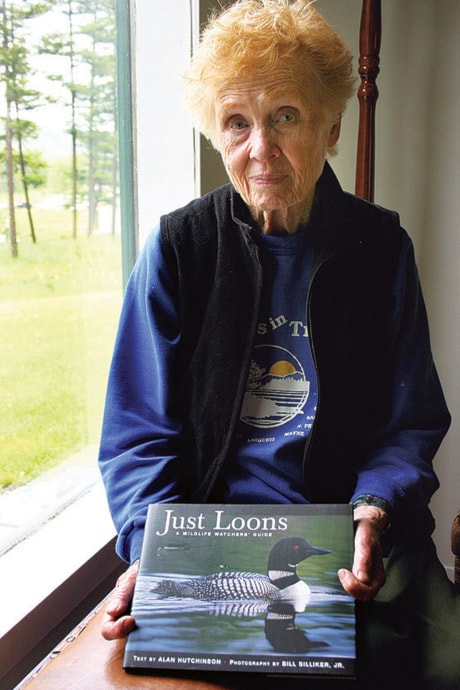KAMLOOPS, B.C. — The rain has put Joan Best’s plans off again. It’s a 45-minute drive along a narrow and curvy gravel road to Saul Lake and she needs to spend at least two hours there.
But the rain is pouring down, making her lawn and the neighbouring acreages lush. So she makes a cup of black and green tea and stays inside her neat little house with Spot and Smokey, her cats.
The gloomy weather is putting her behind on her loon count.
For 12 years, she has gone regularly to Saul Lake throughout the summer, spending two hours at a time, to count loons. A member of the Kamloops Naturalist Club, Best also volunteers with the Canadian Lakes Loon Survey.
While she’s there, waiting to see if any of the birds show up on the water, she’ll scan the lake with her binoculars, pick up garbage, clean out the fire pit, even clear half-charred logs from the ad hoc boat launch.
“I always carry a garbage bag. I always come back with something in it,” she said, taking a sip from her mug.
On her last trip to the Saul Lake area, she found three old chrome chairs and tangles of knotted fishing line that could ensnare a bird or other wildlife.
She loaded it into her 16-year-old Mazda truck and took it away.
She did hear one loon while she was there, but didn’t see it so she couldn’t count it for the survey. In the last five years, she has counted fewer loons and no hatchlings. Humans are one of the biggest factors affecting the birds’ habitat.
Best feels people have become increasingly removed from awareness of nature and of their impact on it.
“There’s been a huge change in society since I was a child,” she said.
Best was born in Kamloops and grew up with three younger siblings at the Tranquille property west of town when it was a tuberculosis sanatorium.
Her dad worked there for 25 years. Best and the other kids who lived there became familiar with all the geography within a day’s walking distance. It was their playground.
She eventually married and moved to Calgary for a long time, where she raised two girls and worked in commercial printing. She was a Girl Guide leader and a member of the Rocky Mountain Ramblers, an outdoor club.
Eventually she returned to B.C., first living on Gabriola Island (and joining the Sierra Club), then returning to Kamloops 15 years ago when her mother and her aunt needed her help.
Regardless of where she has lived, she has been aware of nature and the environment.
And so it bothers her when she drives to and from town on Tranquille Criss-Creek Road and sees trash dumped on the roadside. She knows one particular spot where people frequently take old, engineless cars and push them over the edge.
She knows other markers where bags are commonly left behind. And the places where people get together to party and toss beer cans and bottles around like confetti.
“The other day I found a used, dirty baby diaper. What is that child is going to grow up learning from those parents?”
“We live on one planet with limited and, in fact, decreasing land area.”
She has seen that decrease herself. Ten years ago, when she was 72, Best went to the Arctic. Five years ago, at 77, she travelled to the Antarctic.
She has witnessed melting ice caps at both ends of the planet. It worries her that younger generations don’t seem to be aware of what’s happening in their world, or that they are contributing to the problem.
“Someone coined the phrase ‘nature-deficit disorder,”’ she said.
Best will continue to do her environmental work as long as she can. She has diabetes, but it’s controllable with diet and exercise. She has some difficulty hearing — a side-effect of working in the printing industry in the days before ear protection.
But other than that, she’s healthy. She makes her own bread, cans food from her garden and stokes her wood stove in the winter chill.
She has considered moving closer to town, but she really likes her life in the Tranquille Valley. And being surrounded by natural areas agrees with her.
“My doctor gave me some good advice,” she said. “It’s where you live and what you’re doing up there that’s keeping you alive.”
